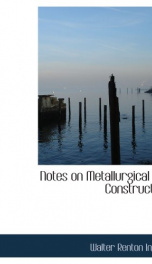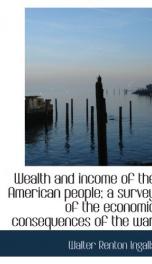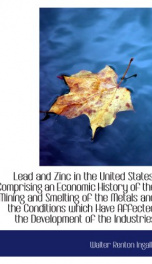notes on metallurgical mill construction

Purchase of this book includes free trial access to www.million-books.com where you can read more than a million books for free. This is an OCR edition with typos. Excerpt from book: CONCRETE FOUNDATIONS AND FLOORS' In construction, the men executing masonry or concrete work will often go to considerable trouble to secure screened sand, irrespective of the really positive advantage that is to be obtained in most cases by using unscreened material. Sand that will pass an 8-mesh sieve ought never to be screened except for the highest class brick or cut-stone (coursed) masonry. Well made 1:5 portland cement concrete, of good standard gravel or limestone screening, will have a compressive strength at four weeks of over 2000 Ib. per sq. in.; and at one year, over 3000 Ib. Tests made at the Case School of Science showed that 3-in. cubes of $: 6 portland cement and gravel concrete had a compressive strength of 3200 Ib. per sq. in. at six weeks, a sp. gr. of 2.17, and an absorption of water of 4.16 per cent. Similar cubes of 1J parts cement, J hydrated lime, and 6 of sand and gravel had a strength of 3880 Ib., a sp. gr. of 2.18, and an absorption of 4.10. Cubes of 1$ parts of cement and 6 of limestone screening, poured in a porous mold, had a strength of 2000 Ib., a sp. gr. of 2.5, and an absorption of 5.04. The coefficient of expansion of concrete, of the proportions 1:2:4, by heat, has been determined as 0.0000055 for 1 deg. F., which is almost the same as that of untempered steel, which is 0.0000060. In proportioning the material, when the mixture is by volume and the mixing is done by hand, a bottomless box will serve as a simple and effective measure. If the box is made of 2xl2-in. plank, 3 ft. square inside, the dimensions are most satisfactory. Such a box, once even-full of sand, and evenly filled three times with the aggregate, with four bags of cement, will make just 1 cu. yd. of concrete (of the proportion 126), in place. The cement, of course,... --This text refers to an alternate Paperback edition.
Info about the book
Author:
Series:
Unknown
ISBN:
1110110855
Rating:
4.5/5 (4)Your rating:
0/5
Languge:
English
Users who have this book
Users who want this book
What readers are saying
What do you think? Write your own comment on this book!
write a commentif you like notes on metallurgical mill construction try:
Do you want to read a book that interests you? It’s EASY!
Create an account and send a request for reading to other users on the Webpage of the book!




